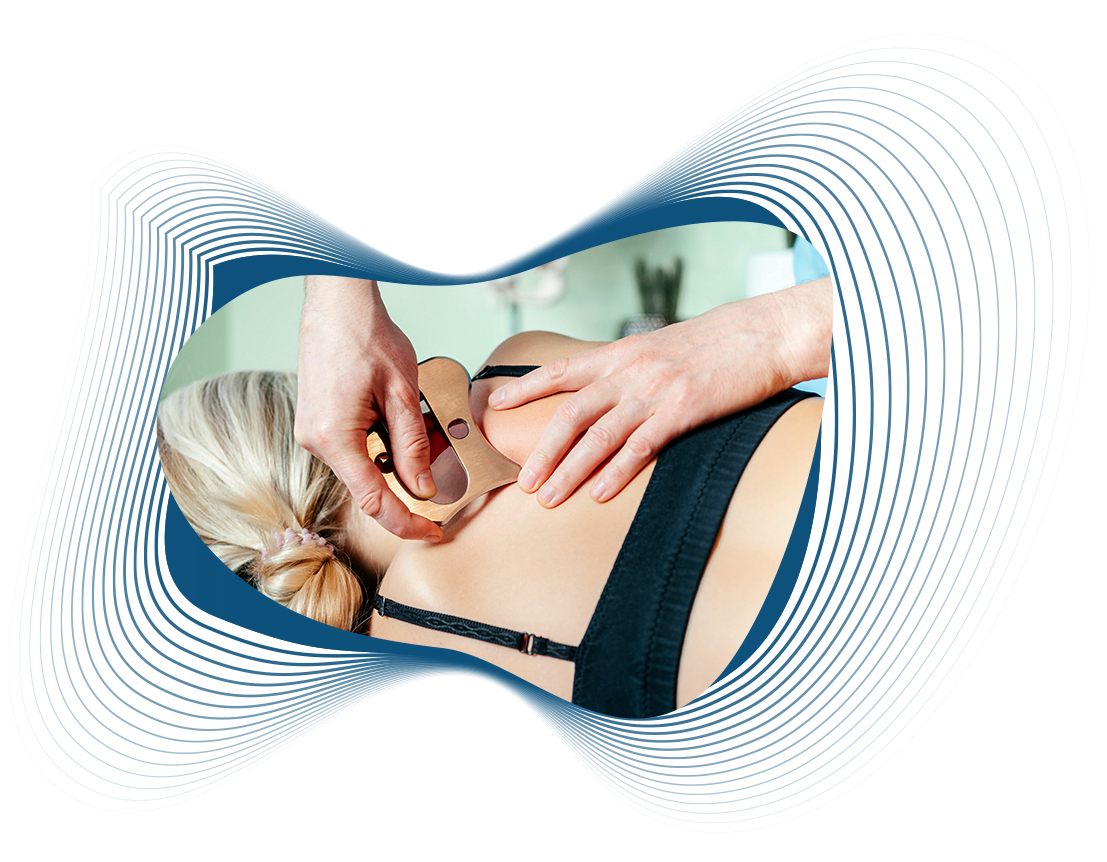Graston Technique

The Graston Technique is a type of manual therapy used primarily to treat soft tissue injuries and conditions. It involves the use of specialized stainless steel instruments to detect and treat areas of chronic inflammation, scar tissue, and adhesions in muscles, tendons, and ligaments.
Here’s a breakdown of how the Graston Technique works:
- Instruments: The technique uses a set of ergonomic, stainless steel instruments with various shapes and sizes. These tools are designed to help the practitioner feel and address areas of restricted movement or scar tissue.
- Assessment: The practitioner uses the instruments to palpate the skin and underlying tissues. The tools help identify areas of fibrosis or adhesions that may be contributing to pain or limited range of motion.
- Treatment: Once problem areas are identified, the practitioner uses the instruments to perform specific movements over the affected tissues. This process aims to break down scar tissue and adhesions, stimulate blood flow, and promote healing.
- Mechanism: The Graston Technique is thought to work by creating a controlled inflammatory response that encourages the body to repair and remodel the damaged tissues. The treatment can increase collagen production and enhance the healing process.
- Uses: It’s commonly used to treat a range of musculoskeletal conditions, such as tendonitis, muscle strains, and repetitive strain injuries. It’s often used in combination with other therapeutic modalities, such as stretching and strengthening exercises.
- Effectiveness: Many patients report significant improvements in pain and function with the Graston Technique. However, as with many therapeutic techniques, individual results can vary, and scientific research on its efficacy continues to evolve.
The Graston Technique is typically administered by trained healthcare professionals, including physical therapists, chiropractors, and athletic trainers.
